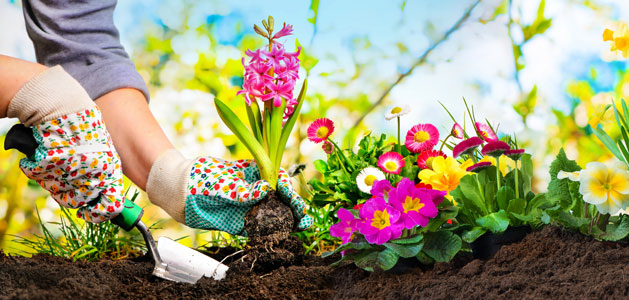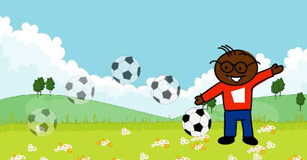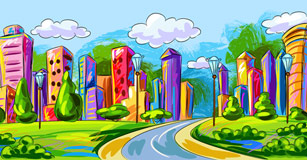7 Ways to Cultivate Creativity in Your Learning Culture
Develop a learning environment that nurtures creativity

If we are going to be able to address the needs and issues in our highly complex and rapidly changing world, we need to develop citizens who are able to think and act in new ways. The need for knowledge and analytical thinking isn’t going away, but now more than ever, our students need to learn creative thinking as well.
An approach that combines the 3R’s with the 4C’s — critical thinking, communication, collaboration, and creativity — can help. Of the 4C’s, creativity is one of the more difficult ones to cultivate in our students. Use these seven ideas to develop a learning environment filled with creativity.
1. Believe everyone can and should be creative
Everyone has the capacity to think and act creatively… everyone. So first, believe you can be creative and work to cultivate creativity in yourself as a human being and as an educator. Second, believe that your students can all be creative too!
Next, demonstrate to your students that you believe they should be creative, by giving them tasks that require them to think and act creatively.

Be warned, for truly divergent thinking, you and your students are probably going to have to break some “rules” or at least reconsider them some of the time.
2. Celebrate difference
When people see something truly creative for the first time, they don’t value it. Our culture celebrates the individual, but many of us don’t want to stand out as different; and our students don’t either.
Make it a habit to celebrate those who are willing to demonstrate their individuality and creativity. It can be as simple as tolerating “out-there” comments or complimenting someone wearing a unique outfit. Share an encouraging smile and let that person know “those colors brightened my day” or “thanks for being you.”
3. Wonder and imagine
The scientific method is grounded in observation. In addition to focused observation for the purpose of science, observe for the simple sake of wondering. When you remove the pressure of an end goal, you remove the stress, and your students and learning culture can more easily open up to new ideas.

“Above all watch with glittering eyes the whole world around you, because the greatest secrets are hidden in the most unlikely places. Those who don’t believe in magic will never find it.” — Roald Dahl
Share an interesting picture with students and ask them to first observe, then wonder, and then imagine. Encourage students to move from “What is it?” to “What could it be?” Encourage the “What if’s?” and wild ideas and allow minds to go from wonder to wander to imagine.
4. Try something new
One of the biggest predictors of a person’s creative capacity is their openness to experience. While this encompasses a lot of different traits, one way you can exercise openness is to try something new.
To get to a creative breakthrough you often have to sit with the discomfort of not knowing exactly where you are or what needs to happen. Chaos can also be beautiful.

Trying things differently lets students know you are willing to take risks and value new ideas and ways of doing things. It also demonstrates that knowing the “right” answer isn’t the only goal.
5. Value questions more than answers
Knowledge will always be essential, but if we want breakthroughs in new knowledge and innovation, students have to build skills in questioning, not answering.
If you are the one asking a question, ask an open-ended one that doesn’t require a specific answer. Then, wait for students to share their ideas. Avoid giving an answer quickly if the initial response is silence. If students know that you aren’t going to fill the silence, they are more likely to do the work to fill it themselves.
Use an explicit technique, like the Question Formulation Technique, to build student skills in questioning. You can also implement a project-based approach to learning where students are presented with a complex issue or problem that requires them to ask and inquire in order to solve.
6. Get students making and playing
Ask your students to create, not just consume. As students make, they construct meaning and build powerful experiences with trying, failing, and trying again.
Play can also be conducive to creative thinking. Not play in the sense of a board game, video game, or competitive sport, but play that:
- is both self-chosen and self-directed
- focuses on means not ends
- has structures or rules, but these may be self-defined
- is imaginative, non-literal, and removed from “real” life
- involves an active, alert, non-stressed frame of mind.
If you aren’t ready to give students a completely open-ended experience, or don’t feel you can with standards and administrative pressure, provide students with choice in the work that they do and promote creativity and agency by making “an idea of your own” a valid and valued option.
7. Expect creativity and celebrate student effort
Set your expectations high and demand creativity. Expect creativity from every student, so you don’t just get it from the students who already have high creativity abilities.

Creative breakthroughs are awesome, and celebrate them when they happen. Like learning, creativity builds during the process of trying, so be sure to celebrate the attempts as well. You can even celebrate failure, as long as that celebration includes reflection, so everyone can fail forward.
In conclusion
To make creativity a habit, choose small steps you can take daily to build your own creative capacity and cultivate a learning culture that values creative thinking and acting as much as analytical thinking and knowledge.











